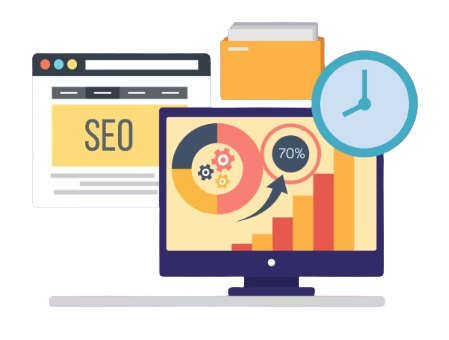The intersection of web vitals on SEO is a game-changer, reshaping the digital landscape. By understanding Core Web Vitals and implementing strategies to enhance page experience with the help of web development services, you can position your website for higher search engine rankings, increased user satisfaction, and long-term success in the competitive online realm.
In the fast-paced digital landscape, user experience has become a top priority for website owners and developers. With Google’s emphasis on Core Web Vitals as ranking signals, understanding the impact of web vitals on SEO is crucial for maintaining a competitive edge. In this comprehensive blog post, we will delve into the world of web vitals and their influence on SEO. We will explore what Core Web Vitals are, why they matter, and provide actionable strategies to improve your website’s page experience and overall search engine ranking.
Unveiling Core Web Vitals:
Core Web Vitals is a set of user-centered metrics introduced by Google to assess the overall page experience of a website. These metrics include Largest Contentful Paint (LCP), First Input Delay (FID), and Cumulative Layout Shift (CLS). We’ll delve into each metric, explaining how they measure loading performance, interactivity, and visual stability, respectively. Understanding these metrics is essential for deciphering how users perceive your website’s speed and responsiveness.

The SEO Connection:
Google has explicitly stated that Core Web Vitals will play a significant role in search engine ranking starting in 2021. Websites that provide better user experiences and meet the defined thresholds for web vitals are likely to rank higher in search results. We’ll discuss how web vitals impact SEO, leading to improved visibility, increased organic traffic, and ultimately, higher user engagement. By optimizing your page experience, you can create a virtuous cycle of positive user interactions that contribute to SEO success.
Strategies for Improving LCP:
Largest Contentful Paint measures the time it takes for the largest content element to become visible within the user’s viewport. To enhance LCP and overall loading performance, we’ll provide strategies such as optimizing images by compressing and resizing them, leveraging browser caching to reduce server response time, minimizing render-blocking resources, and utilizing content delivery networks (CDNs) to distribute content efficiently.
Enhancing FID for Better Interactivity:
First Input Delay gauges the responsiveness of a website by measuring the delay between a user’s interaction and the website’s response. To reduce FID and enhance interactivity, we’ll discuss techniques such as minimizing JavaScript execution time through code splitting, optimizing event handlers, and deferring non-essential JavaScript to allow critical tasks to execute promptly.
Tackling CLS for Visual Stability:
Cumulative Layout Shift measures the unexpected layout shifts that occur during page loading. We’ll explore methods to address CLS, such as specifying image dimensions to prevent layout shifts, using CSS aspect ratios to maintain consistent proportions, and avoiding DOM manipulations that can lead to content shifts. By ensuring visual stability, you create a smoother and more predictable user experience.
Mobile Optimization and Web Vitals:
Mobile-friendliness is a critical factor in web vitals and SEO. With mobile searches dominating online activities, we’ll emphasize the importance of mobile optimization. Strategies like responsive design, mobile-first development, and AMP (Accelerated Mobile Pages) implementation will be covered to ensure a seamless page experience across devices. Optimizing for mobile not only enhances user experience but also aligns with Google’s mobile-first indexing approach.
Tools for Web Vitals Assessment:
Google offers tools such as PageSpeed Insights and Google Search Console to assess and monitor Core Web Vitals. We’ll guide you through using these tools to analyze your website’s performance, identify issues affecting web vitals, and prioritize improvements. Regular monitoring allows you to track your progress and make informed decisions to enhance your page experience continually.
A Holistic Approach to Page Experience:
While Core Web Vitals are crucial, a holistic approach to user experience involves considering other factors like mobile-friendliness, safe browsing, HTTPS usage, and intrusive interstitial guidelines. We’ll discuss how a comprehensive page experience can positively impact user engagement, brand credibility, and SEO performance. By addressing various aspects of user experience, you create a cohesive and satisfying online environment.
Future-Proofing Your Website:
As user expectations evolve, maintaining a positive page experience becomes an ongoing process. We’ll explore the importance of continuous monitoring, testing, and adapting your website to meet changing user behaviors and technological advancements. Staying proactive ensures your website remains competitive and provides a seamless experience to users, regardless of their devices or network conditions.
Conclusion:
The intersection of web vitals on SEO is a game-changer, reshaping the digital landscape. By understanding Core Web Vitals and implementing strategies to enhance page experience with the help of Tanbits‘ web development services, you can position your website for higher search engine rankings, increased user satisfaction, and long-term success in the competitive online realm. Prioritizing user-centric optimization not only benefits SEO but also establishes your website as a valuable destination for visitors, encouraging them to stay, engage, and convert.
BACK










